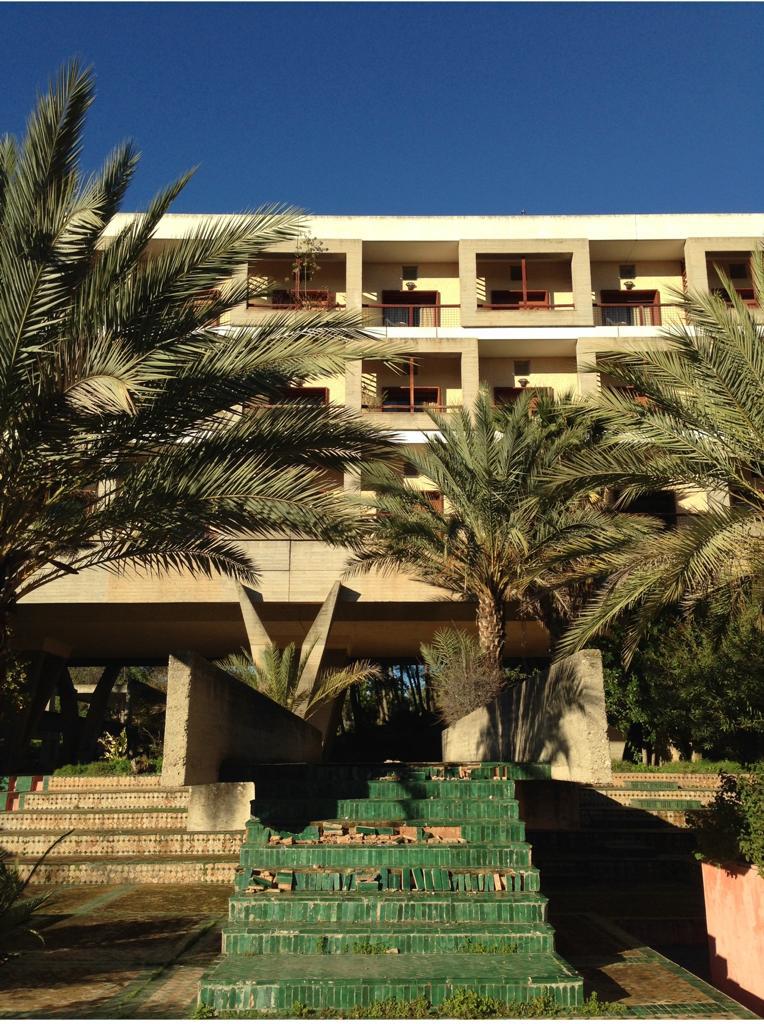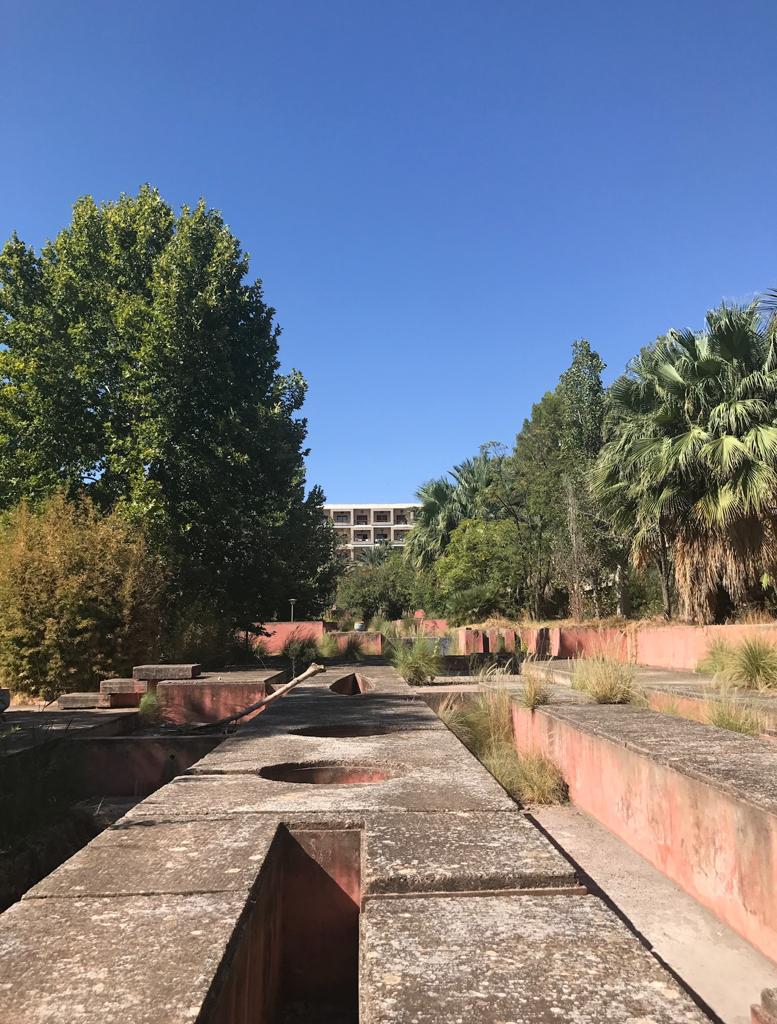-
 © Aziza Chaouni
© Aziza Chaouni -
 © Aziza Chaouni
© Aziza Chaouni
Prior to independence, Morocco’s domestic tourism comprised moussems (religious festivals) and thermalism. The oasis of Sidi Harazem, located 15 km outside of Fez, represented a convergence of the two typologies; the mausoleum of Sidi (Saint) Harazem located amongst ancient thermal springs renowned by Moroccans for their healing properties. Hence, in 1959, four years after Morocco gained its independence from the French, Sidi Harazem was selected by the young Independent State to host the country’s first large public leisure facility: a state-of- the-art thermal bath complex.
The Caisse des Depots et De Gestion (CDG), the Moroccan state-pension fund, commissioned French-Corsican architect Jean-François Zevaco to ‘modernize’ the existing thermal bath site by providing modern touristic infrastructure that would contribute to Morocco’s standing as a world- class destination. Sprawling over an oasis valley of 14 hectares, it is a brutalist gem that seamlessly integrates water, nature and concrete. Zevaco carefully choreographed the complex’s programs, comprising entrance a plaza, two pool, a hotel, seventy-six bungalows, two markets, gardens and ponds, to offer a unique experience to the visitor. Unfortunately, due to the rise of coastal tourism in Morocco, the complex fell into disuse, mismanagement, and disrepair starting the late 1970s.
With the support of the Getty Conservation Institute’s ‘Keeping it Modern’ program, Aziza Chaouni Projects developed a Conservation Management Plan, adaptive reuse strategy, and cultural activations for the Sidi Harazem Thermal Bath Station. To restimulate the local economy, reestablish the local community’s ties to their ancestral land, promote sustainable thermalism and ecotourism regionally, domestically, and internationally (UN SDG 6.6 + 11.a), and raise awareness of the site’s cultural heritage, Aziza Chaouni Projects used participatory design methods to create a future vision for the site that balances the needs of a variety of stakeholders. The adaptive reuse scheme for the Sidi Harazem Thermal Bath Complex promotes sustainable ecotourism and development with a focus on providing decent work to the local population (including women and girls) (UN SDG 8). Our research and practice as activist-architects seeks to balance the celebration of Zevaco’s mastery, the prominence of Sidi Harazem as an important Modern site in Africa, and the promotion of open dialogues with community stakeholders which explore the legacies of their land and traditions.
-
 Nid d'Abeille experimental, colonial-era worker housing, Hay Mohammadi, Casablanca, 1952
Nid d'Abeille experimental, colonial-era worker housing, Hay Mohammadi, Casablanca, 1952
Hay Mohammadi is a mythicized yet maligned neighbourhood on the sprawling margins of Casablanca, Morocco. It is a densely populated, historically lower-class area just north-east of the city’s centre. Roughly bordered on one side by the Atlantic coast and on all others by derelict industry and wide road and rail corridors, it is one of Morocco’s first urban industrial hubs. Once home to North Africa’s oldest and largest slum, al-hay, as the locals affectionately refer to it, has been targeted with successive waves of architectural experiments in housing and urban planning, reaching back to the colonial era.
Owing to this, in recent years the neighbourhood has become a key location for heritage and cultural activist work, often to mixed responses from the community. Based on a combination of ethnographic fieldwork, archival research, participant observation as a guide-in-training, and collaborative ludic and drawing exercises carried out with local inhabitants over the course of sixteen months, my contribution proposes to illuminate the genealogies of heritage making efforts in contemporary Morocco and the competing uses towards which they are mobilized by a variety of actors in the contemporary moment.
-
 Nid d'Abeille building with inhabitants' appropriations and modifications, 2014
Nid d'Abeille building with inhabitants' appropriations and modifications, 2014 -
 'Hay Mohammadi: A history at play' a board game based on the neighbourhood’s history and heritage
'Hay Mohammadi: A history at play' a board game based on the neighbourhood’s history and heritage